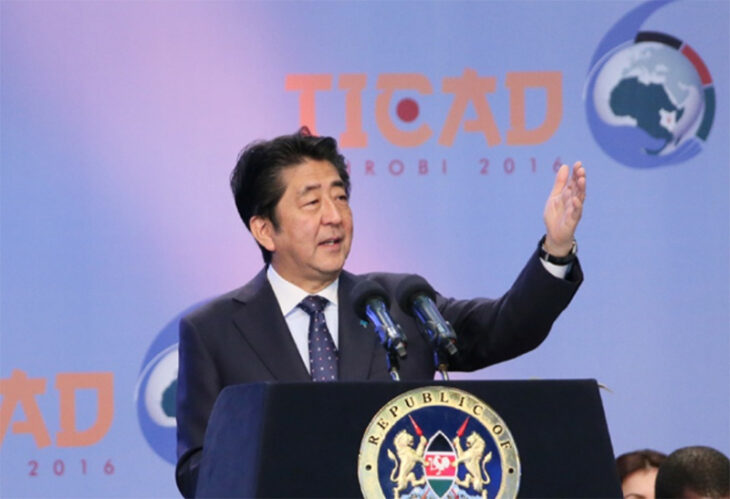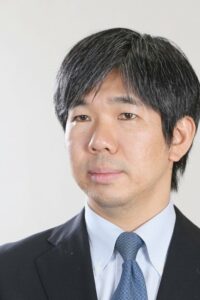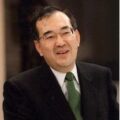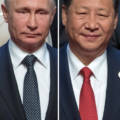“On Prime Minister Abe Shinzo”—Creating a new foreign policy to replace the Yoshida Doctrine

Prime Minister Abe talks about the “Free and Open Indo-Pacific” initiative at the opening session of TICAD VI in Nairobi, Kenya, August 27, 2016.
Photo: Cabinet Public Affairs Office
Hosoya Yuichi, Professor, Keio University
If Yoshida Shigeru (1878–1967) laid the foundation for Japanese diplomacy after World War II, it was the former Prime Minister Abe Shinzo who updated it to a post-Cold War Japanese foreign policy.
The politician who made the post-Cold War

Prof. Hosoya Yuichi
Exactly 60 years ago, in September 1962, political scientist and Kyoto University assistant professor Kosaka Masataka (1934–1996), returned from his studies at Harvard University, and was staying at the International House of Japan (IHJ) in Tokyo.
IHJ research director Royama Michio (1928–2009) contacted Kasuya Kazuki (1930–2014), editor-in-chief of Chuokoron, and recommended that he meet with the young political scientist. Immediately, Kasuya got in contact with Kosaka, who was around the same age, and arranged for a meeting. After meeting and hitting it off with Kosaka, Kasuya asked him to write a manuscript, which became the opening article in the January 1963 issue of Chuokoron, titled “Genjitsu shugisha no heiwaron” (A Realist Theory of Peace), and marked Kosaka’s debut in serious magazines.
This paper made the young genius Kosaka widely known, and Kasuya further invited Kosaka to write another article, saying, “Why don’t you do Yoshida Shigeru?” Kosaka subsequently visited Yoshida Shigeru’s house in Oiso, Kanagawa Prefecture, where he met and interviewed Yoshida himself, who had retired from politics by this time. This was arranged by Matsumoto Shigeharu, Managing Director of IHJ.
Kosaka’s essay “Saisho Yoshida Shigeru Ron” (On Prime Minister Yoshida Shigeru) (Chuokoron, February 1964) changed the erstwhile assessment of Yoshida. In the Japanese academia dominated by left-wing intellectuals, he was the incarnation of “conservative reaction,” with there being virtually no positive evaluation of Yoshida for having concluded a “partial peace” (katamen kowa) that excludes the Soviet Union and China as well as the Japan-US Security Treaty. Kosaka wrote at the beginning of his “Saisho Yoshida Shigeru Ron” that “Up until now, Yoshida Shigeru has been horribly wronged by critics and intellectuals. Yoshida’s self-righteousness and stubbornness have been repeated as set phrases. But on the flip side, doesn’t that point to his determination and the solidity of conviction?”
Kosaka maintained his academic integrity and wrote a groundbreaking critical biography of Yoshida that interweaved his own impressions of Yoshida from their meeting. He argues that Yoshida “had a solid philosophy about international politics and tried to give Japan the status afforded by that philosophy.”
So what is this “solid philosophy”? According to Kosaka, it was Yoshida “giving military power only a secondary status” while “believing that political and economic relations are fundamental to the relations between nations, which is why he wished and made efforts for Japan to occupy an honorable position in the international community.”
It was Yoshida who established a foreign policy based on the Japan-US alliance during the Cold War, centering on light armament and economic growth, which was what came to be known as the “Yoshida Line.” But this is not the same as the post-Cold War international role and international identity expected of Japan. In response to the so-called new international environment of the post-Cold War, foreign policy also needed to be updated. The first to boldly try to realize this and to some extent succeed was the former Prime Minister Abe.
The three faces of Abe Shinzo
The former Prime Minister Abe Shinzo’s shooting incident on July 8, 2022 came as a shock to the people of Japan and the world. Not only Japanese domestic media but also the CNN, the BBC, Al Jazeera, and other major media outlets around the world all made this top news, reporting on the sudden death of this former prime minister of Japan.
With this, various media outlets put together retrospective features on Abe, twice the government head. Even more than with Yoshida Shigeru, opinions about how to evaluate Abe are divided. Why are opinions about Abe so divided and even polarized between “Pro-Abe” and “Anti-Abe”? As a clue to understand this, we need to first note that Abe was a politician with several different faces.
To begin with, we have his face as a conservative politician and as a nationalist. Abe himself identified his position as “open conservatism” in Atarashii Kuni-e (Toward a New Country) (2013, Bunshun shinsho), which is the “definitive edition” of Utsukushii Kuni-e (Toward a Beautiful Country) published in 2006. At the same time, he looked back on his own experiences and recalled, “Even when going to the university, there still pretty much exists the same atmosphere as in society at large that reformists = good guys and conservatives = bad guys.” He said, “As always, mass media, academia, and discussion circles were occupied by progressive intellectuals.”
What is this “open conservatism” that Abe spoke of? In his own words, it is the position that “Since I was born and raised in this country, I want to live here with confidence.” Abe added, “I think conservatism is not ideology, but a way of thinking about Japan and Japanese people.”
It is important to note that Abe specifies that “conservatism” is not ideology. I suspect that much of the criticism against him has to do with concerns that he was trying to spread “conservatism” as ideology. There may have also been concerns about him being driven by rigid nationalism in the form of “closed conservatism.” But this was something that Abe denied, and his government was characterized by a more flexible and pragmatic political stance.
“Pride” in everyday life
For Abe, “open conservatism” was a general sense of “I want to live in this country with confidence.” Therefore, when discussing “nationalism” in the same book, he starts with an episode from the 1964 Tokyo Olympics. For example, he mentions weight lifting, where he sees one form of nationalism with reference to “the proud feeling that comes from seeing a Japanese person competing with and winning over great persons from around the world.”
Abe, who was born in 1954, experienced the 1964 Tokyo Olympics when he was still an elementary school student and a child. Yet he wrote that “it was refreshing to think that Japan was displaying itself to the world in this way,” adding that he “felt proud even though he was young.”
Here is a glimpse of one reason why Abe won six national elections. In short, instead of advocating conservatism and nationalism exclusively as ideology, he sought to restore Japanese “confidence” and “pride” through the sports competition that is the Olympics and in daily life, which likely resonated with many Japanese people and voters, thus generating wide support.
At the same time, from Abe’s point of view, the independence that Yoshida Shigeru achieved at the Treaty of San Francisco was not enough. That is why he stated the following: “With the conclusion of the Treaty of San Francisco in 1951, Japan formally regained sovereignty, but everything in the postwar Japanese framework, not only the constitution but also the Fundamental Law of Education as the basis of educational policy, was created during the occupation era.”
According to Abe, “The country’s framework must be created from scratch by the hands of the Japanese people themselves.” Here you can see the difference between the “philosophy” of Yoshida Shigeru and that of Abe Shinzo.
Abe’s second face is the “fighting politician.”
As is well known, Abe, in the “foreword” of his book Atarashii Kuni-e, he differentiated between politicians who are “fighting politicians” and those who are “non-fighting politicians,” describing these two categories as follows: “A ‘fighting politician’ is a politician who acts without fear of criticism if it is for the sake of the state and the people. A ‘non-fighting politician’ is a politician who agrees and says ‘You’re right’ but never bears the brunt of the criticism.”
Abe’s obsession with Legislation for Peace and Security that enables partial use of the Right of Collective Self-Defense, which would later divide public opinion, clearly shows his political stance of “acting without fear of criticism.” By contrast, while many previous prime ministers had often recognized its necessity, we repeatedly saw how they would “never bear the brunt of criticism.” This is probably the very reason why Abe “always wanted to be a ‘fighting politician’ ever since I was first elected.”
In addition to “open conservatism” and “fighting politician,” he had a third face of a leader promoting “internationalism.” Many cite Abe’s greatest achievement as the areas of foreign policy and security policy. Never before had a Japanese prime minister been so widely known and positively acclaimed around the world.
Abe was trusted and a friend of the former US Presidents Obama and Trump, Russian President Putin, Indian Prime Minister Modi, former Permanent President of the European Council Donald Tusk of the EU (European Union), and other leaders of various countries and major institutions with different political systems. This is also connected with how Abe as prime minister promoted “Proactive Contribution to Peace based on International Cooperation” and interacted with leaders from around the world, demonstrating various initiatives of the international cooperation framework.
Abe himself said in a speech in New York in September 2013, “In this age, everything is connected. Nothing lies outside a network. Outer space has no borders. Chemical weapons transcend borders.”
In this modern world of globalization and growing interdependence, Japan cannot afford to isolate itself and close its borders. If so, rather than passively accepting the rules created by other great powers, we should actively create rules and create peace ourselves. Abe also stated the following:
“It is my belief that Japan and the US together should lead the Indo-Pacific Century to make it one that cherishes freedom, democracy, human rights, and rules-based order, with the TPP [Trans-Pacific Partnership Agreement] as its backbone.” (Abe Shinzo, Nihon no Ketsui (Japan’s Resolution) (Shinchosha). These words seem to suggest the subsequent direction of Abe’s diplomacy. In 2016, Abe announced the “Free and Open Indo-Pacific” Initiative, the most globally influential and successful diplomatic vision in the history of Japanese diplomacy since the Meiji period (1868–1912). What is more, government officials and experts around the world have now developed and are advocating the “Quadrilateral Security Dialogue” (the Quad), which is a cooperative framework of Japan, Australia, India and the United States.
Moreover, after the Obama administration, when the United States distanced itself and withdrew from the TPP, Japan demonstrated leadership and realized the CPTPP (Comprehensive and Progressive Agreement for Trans-Pacific Partnership) in 2018. It was in this way that Abe led Japan’s most long-lived administration with his three faces of “open conservatism,” “fighting politician,” and “internationalism.”
A gradual revolution
Abe saw himself as a “fighting politician” and frequently displayed himself as explaining his own views and fiercely criticizing his opponents in debates at the Diet and in the media. However, the reforms that Abe pursued in foreign policy, security policy, and economic policy were what may be termed a “gradual revolution,” rather than the conventional fundamental policy shifts.
As for allowing the exercise of the Right of Collective Self-Defense, which was his most controversial issue, it does not fundamentally overturn the conventional interpretation of the Cabinet Legislation Bureau, but rather was a change in interpretation to flexibly adapt earlier policy to the times, as if “grafting” a tree. Still, the media at the time sharply criticized this change in constitutional interpretation and the introduction of new security legislation.
For example, the Asahi shimbun newspaper’s July 16, 2015 editorial article is a rare occurrence where the adoption of security-related bills by the Special Committee of the Lower House is harshly criticized as “an outrage that overturns postwar developments” by being a “rebellion against constitutionalism” and a “serious challenge to the democratic values that Japan has built up over the past 70 years after the war.” They also attacked it as an “outrageous act of mass arrogance and irresponsibility” that “overturns pacifism, the ideals of the constitution, and democratic values.” Such excessive wording contributed to the view that the government’s new policy was a revolutionary shift.
Yet in reality, the Legislation for Peace and Security did not destroy Japanese constitutionalism or even Japanese pacifism. It also did not serve as a turning point to destroy Japanese democracy.
Rather, there is concern around the world about “retreat of democracy” and populist firebrand and authoritarian leaders are appearing in great numbers, while Abe has been internationally recognized as a leader in defense of democracy.
As a defender of the democratic world
Abe had a great sense of mission for Japan to defend the values of liberty and democracy and to take a leading position in the democratic world. For example, in Atarashii Kuni-e, he argued that “Japan has humbly committed to nation-building and international contribution under the rule of liberty, democracy, fundamental human rights, and the law for 60 years. In the meantime, we have never shown a belligerent attitude. Nevertheless, when something goes wrong in relations with other nations, we have assumed a stance of standing still and waiting for the storm to pass, due to our guilt over past wars. As a result, it has given the world the impression that fault lies with us.”
“Value-based diplomacy” was central to the Abe administration’s diplomacy, which was a clear step forward from the “Yoshida Line.” As a consequence of developing diplomacy based on values like liberty and democracy, strengthening partnerships with countries that share the same values became an important goal. For example, immediately after the establishment of the second Abe administration, Abe himself presented a paper in English titled “Asia’s Democratic Security Diamond” where he discussed the importance of establishing a “diamond” consisting of the four countries Japan, United States, Australia, and India.
This concept is commonly referred to as the “Quad,” and was something that Abe had been working on since before the establishment of his first administration. In an interview with the magazine Diplomacy, Abe was asked “When did you start to focus on the Indo-Pacific?” by editor-in-chief Tanaka Akihiko (President of the National Graduate Institute for Policy Studies, currently President of JICA). In response, Abe said, “It was during the Koizumi administration.” (Abe Shinzo, interviewer=Tanaka Akihiko, Strategic Thinking within the Free and Open Indo-Pacific (Gaiko Vol. 65, Jan./Feb. 2021). The “Quad” initiative was later developed into the “Free and Open Indo-Pacific” that focused on the “Indo-Pacific region,” which came to fruition in a speech in Nairobi, Kenya in August 2016.
But Abe’s global leadership and face as a leader in defense of democracy were never fully known in Japan. Therein lay the biggest contradiction and dilemma.
Abe’s promotion of economic cooperation with China and Russia, and the continuation of historical discourses such as the Murayama Statement and the Kono Statement led to disappointment among some conservative supporters. That might be why Abe, who actually pursued practical and flexible diplomacy, had to feign conservative ideology at home. This might explain the differences in evaluation in Japan and abroad.
From the “Yoshida Line” to the “Abe Line”
Postwar Japanese diplomacy has generally been discussed on the basis of the “Yoshida Line” or the “Yoshida Doctrine.” But Abe was critical of such a line. In Atarashii Kuni-e, he described it as “increasingly devolving our thinking about security, which is most important to the state.” In other words, “economic growth and the lightly armed line was the decision to entrust almost all of our security to the United States.”
In this way, he pointed out that “by leaving Security to other countries and prioritizing the economy, we certainly gained great things materially,” but “we might also have lost a great deal spiritually.”
Similar concerns were expressed by Kosaka Masataka, whom I introduced at the beginning. Kosaka once stated that “The biggest problem is that the pursuit of freedom without being held responsible for the consequences corrupts the spirit of a person.” Having referenced this, Nakanishi Hiroshi, professor of Kyoto University and someone whom Kosaka taught, argued that “After the Cold War and the Gulf War, something that Kosaka placed particular emphasis on and was concerned about was Japanese political stagnation, ‘lack of language,’ and ‘corruption of the spirit’” (Nakanishi Hiroshi, “Kenryoku seiji no anchinomi—Kosaka Masataka no Nihon gaiko ron” [The Antinomy of Power Politics: Masataka Kosaka’s Theory of Japanese Foreign Policy], Iokibe Makoto, Nakanishi Hiroshi hen “Kosaka Masataka to Sengo Nihon” [Iokibe Makoto and Nakanishi Hiroshi, eds. Kosaka Masataka and Postwar Japan], Chuokoron Shinsha).
The materialism created by “economic growth and the lightly armed line” and the basic stance of dependence on others may have contributed to this “spiritual decay” of Japanese people. If this is the case, Japan’s responsibilities should also expand in accordance with the changing times, and Japan’s role should also change. The “Yoshida Doctrine” was never permanently valid but only a temporary inductive answer needed to address the challenges faced by the postwar Japan.
Rather than holding on to the “Yoshida Doctrine” and settling in the comfort of limited international responsibilities, we must have the courage to face the harsher realities of the world. I believe that is the new foreign policy that we should engage with as the “Abe Doctrine,” and that this was also something that Abe strongly aspired to.
Translated from “Tokushu Abe Seiji ga Nokoshitamono: Saisho Abe Shinzo ron—Yoshida Dokutorin ni kawaru Sin Gaikosenryaku wo kizuku (“On Prime Minister Abe Shinzo”—Creating a new foreign policy to replace the Yoshida Doctrine),” Chuokoron, September 2022, pp. 48–55. (Courtesy of Chuokoron Shinsha) [November 2022]
Keywords
- Hosoya Yuichi
- Keio University
- Yoshida Shigeru
- Yoshida Doctrine
- Abe Shinzo
- fighting politician
- prime minister
- Cold War
- Kosaka Masataka
- Kasuya Kazuki
- Chuokoron
- foreign policy
- conservative
- reformist
- nationalism
- internationalism
- Olympics
- Atarashii Kuni-e
- Indo-Pacific Century
- security
- pacifism
- self-defense
- value-based diplomacy
- Yoshida Line
- Abe Line
- Abe Doctrine




